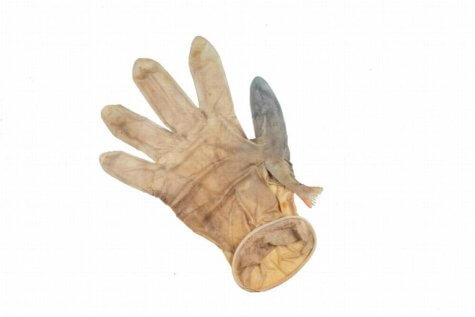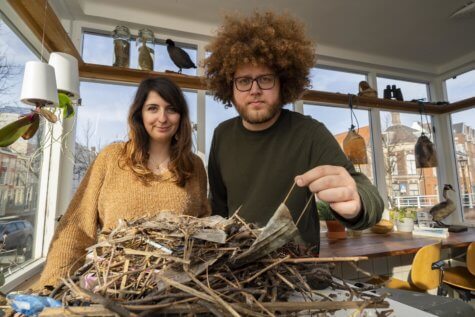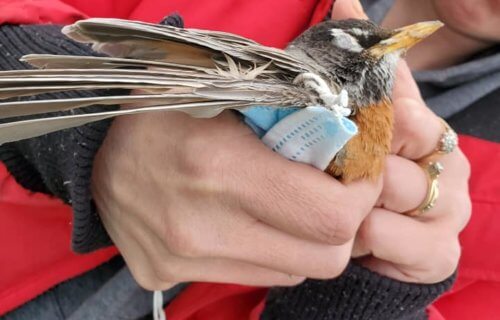LEIDEN, Netherlands — Recent studies are calling the millions of coronavirus face masks people throw away a ticking plastic bomb. Unfortunately, a new report from the Netherlands finds that bomb has already gone off when it comes to wildlife. A team of biologists is revealing the damage disposable COVID safety gear is having on the world’s animal population.
The scientists from Leiden started their research after discovering a perch caught in a latex glove during the pandemic. For all intents and purposes, researchers call this the first Dutch victim of corona waste. Since then, they have been collecting data and evidence of the consequences of COVID waste pollution on animals worldwide.
Biologists Auke-Florian Hiemstra from Naturalis Biodiversity Center and Liselotte Rambonnet from Leiden University are still examining how often and where animals are interacting the most with COVID products humans are discarding. Their samples and observations span the globe, from Brazil to Malaysia, coming from social media, websites, and local newspaper reports.
COVID waste can injure all types of animals

Researchers note incidents of foxes in the United Kingdom and birds in Canada all becoming entangled in discarded face masks. Hedgehogs, seagulls, crabs, and even bats are all encountering the disposable plastics in the environment.
In some cases, study authors say animals are eating this debris. There are reports of apes chewing on face masks and a penguin with one in its stomach. Researchers warn that pets are also at risk of accidentally swallowing a face mask, especially dogs.
“Animals become weakened due to becoming entangled or starve due to the plastic in their stomach,” Rambonnet emphasizes in a media release.
“Vertebrates and invertebrates on land, in freshwater, and in seawater become entangled or trapped in corona waste,” Hiemstra adds.
Making homes out of coronavirus trash?

The study even finds some animals have started using COVID pollution to build nests over the last year. For example, the team discovered a coot’s nest in the Netherlands constructed using face masks and gloves, possibly discarded improperly.
“The packaging from paper handkerchiefs is found in nests too. As such, we even see the symptoms of COVID-19 in animal structures,” Hiemstra reports.
The scientists also thanked all the photographers, litter collectors, birdwatchers, wildlife rescue centers, and veterinarians who contributed to their project.
“As a result of this, we can learn more about the impact of this category of disposable products on wildlife. We therefore ask people to keep sharing their observations so that we can maintain an up-to-date overview,” Rambonnet concludes.
The team is asking the public to send their ongoing observations to www.covidlitter.com as they continue to raise awareness of corona waste. They are also calling on people to consider switching to reusable face masks and safety gear.
The study appears in the journal Animal Biology.
